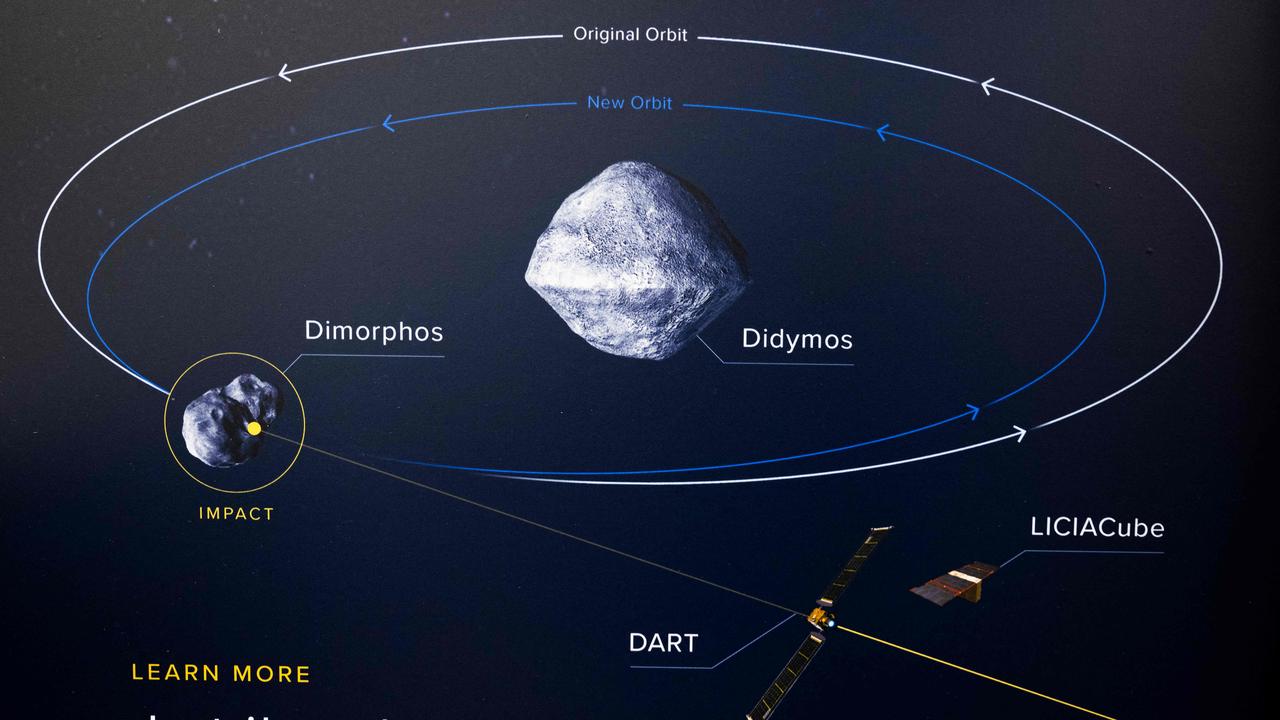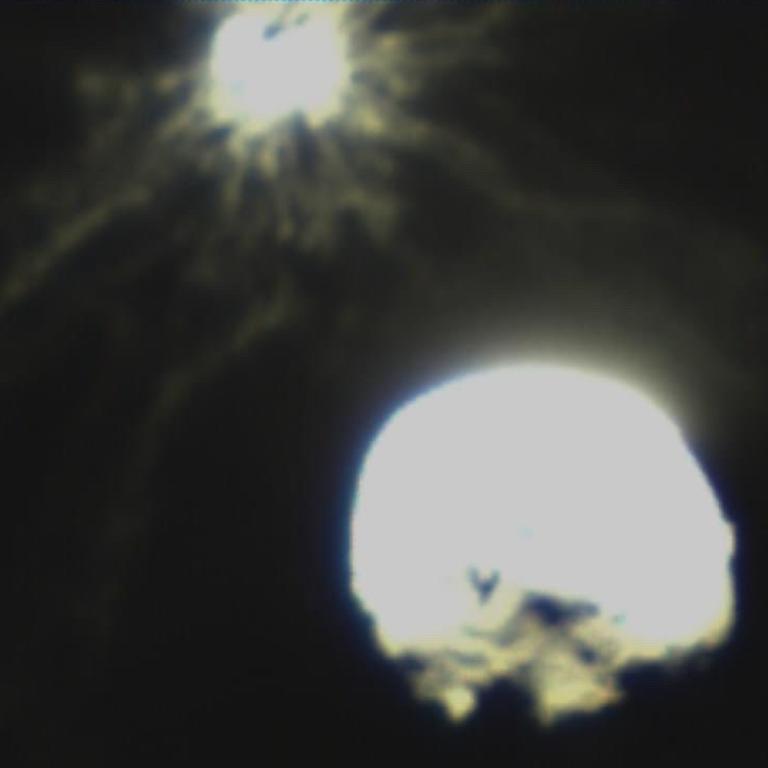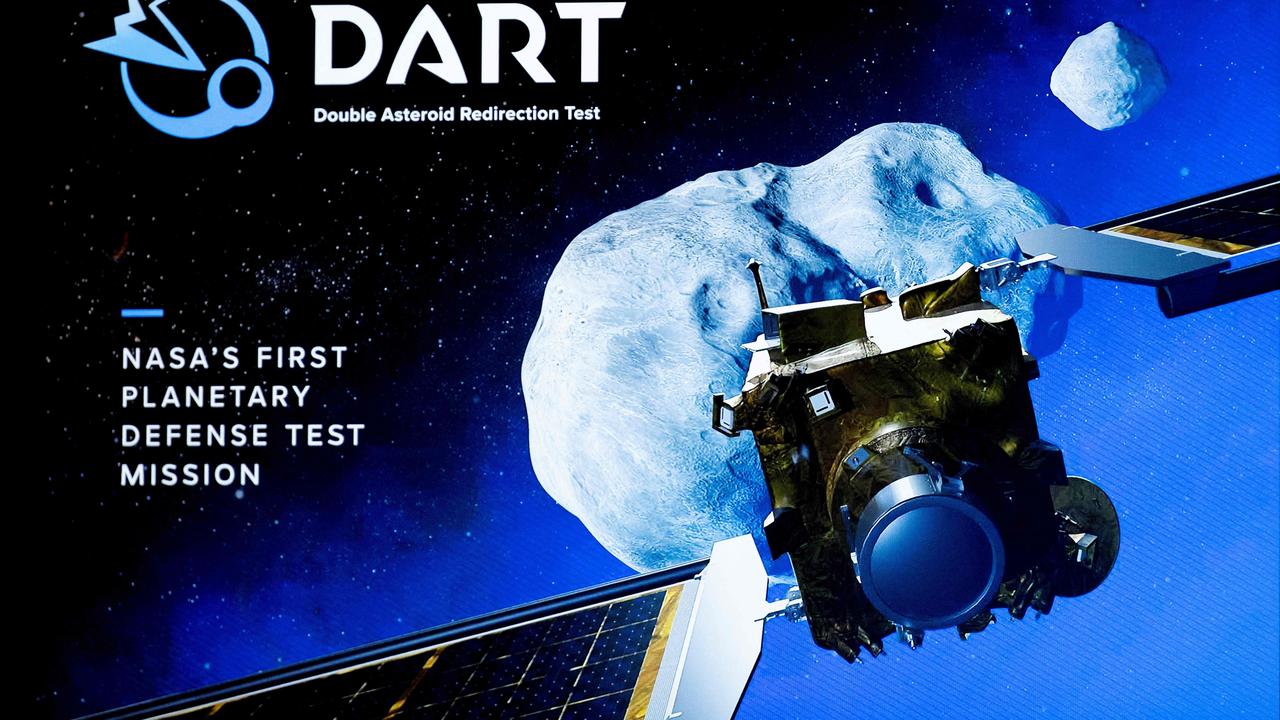First incredible pictures reveal impact from NASA asteroid crash
‘This is not a movie’: NASA has released the first close-up images of the DART spacecraft’s asteroid collision, showing a plume of bright debris spreading across space after the moment of impact

READING LEVEL: GREEN
The first stunning images of a NASA spacecraft crashing into an asteroid* have been released.
The series of four images show the before-and-after of the Didymos* binary* asteroid system, including debris* surrounding the smaller asteroid Dimorphos* after the Double Asteroid Redirection Test (DART) spaceship hurtled into it.
The impact was captured by the Italian space agency’s tiny spacecraft, LICIACube, with images arriving to Earth about three hours later.

“We’re really very proud,” said Istituto Nazionale di Astrofisica (INAF) science team lead Dr Elisabetta Dotto during a news conference.
Dr Dotto said the images would help understand the structure and composition* of Dimorphos, adding that more LICIACube images will be released in the coming days showing that Dimorphos is surrounded by bright and hazy debris.

“Dimorphos is completely covered really by this emission* of dust and detritus* produced by the impact,” Dr Dotto said.
The mission gives humanity the first look at how an asteroid would react after being struck by a spacecraft.
NASA’s DART spacecraft rammed the asteroid at blistering speed in a historic test of humankind’s ability to prevent a cosmic object threatening Earth’s security.

“Impact confirmed for the world’s first planetary defence test mission,” said a graphic on the space agency’s livestream, as engineers and scientists erupted in cheers.
Launched from California last November, the DART spaceship ploughed into the small space rock at 22,500 km/h.
DART’s radio signal abruptly ceased on impact — and it will be days or even weeks before scientists determine how much or even if the asteroid’s path was changed.



WATCH THE VIDEO
Neither the asteroid moonlet Dimorphos, nor the big brother it orbits, Didymos, pose any threat to our planet as they loop the sun, passing some 11 million km from Earth at nearest approach.
But NASA decided it was important to carry out the experiment before an actual need was identified.
“No, this is not a movie plot,” NASA Administrator Bill Nelson tweeted.
“We’ve all seen it (in) movies … but the real-life stakes* are high,” he said in a prerecorded video.

DART’s on-board camera saw Dimorphos an hour before impact.
“Woo-hoo,” Johns Hopkins mission systems engineer Elena Adams said.
“We’re seeing Dimorphos – so wonderful, wonderful.”
By striking Dimorphos head on, NASA hopes to push it into a smaller orbit, shaving ten minutes off the time it takes to encircle Didymos, which is currently 11 hours and 55 minutes – a change that will be detected by ground telescopes in the days that follow.
GLOSSARY
- asteroid: rocky objects that orbit the sun but are much smaller than planets
- Didymos: the name comes from the Ancient Greek word for twin
- binary: made of or relating to two things
- debris: broken pieces left after the destruction of or damage to something larger
- Dimorphos: the name comes from the Ancient Greek word meaning “having two forms”
- composition: the way that different parts or elements are combined to make a whole
- emission: something being released, discharged, an outpouring or spreading of something
- detritus: waste, debris, product of destruction or disintegration
- stakes: high stakes refers to a risky situation in which people could save or lose a great deal
EXTRA READING
NASA spacecraft successfully slams into asteroid
NASA prepares to return to the moon
Space junk on collision course with moon
QUICK QUIZ
- What does DART stand for?
- How many kilometres from Earth is the Didymos binary asteroid system?
- At what speed was the DART spacecraft travelling when it hit the smaller asteroid?
- What is the name of the tiny spacecraft that captured the images?
- What is the full name of the Italian space agency?
LISTEN TO THIS STORY
CLASSROOM ACTIVITIES
1. Write captions
Look carefully at the photos. For each photo, write a detailed caption (or explanation/ description of what is happening in the photo). Your caption should be detailed and exciting! Your purpose is to help people who are unable to see the photos understand what is happening in them.
Time: allow 30 minutes to complete this activity
Curriculum Links: English; Science
2. Extension
Can you think of any other ways that scientists could protect Earth from objects in space crashing into us? Create a design based on your idea. You have an unlimited budget, and the world’s best engineers and scientists to help you.
Time: allow 40 minutes to complete this activity
Curriculum Links: English; Science; Critical and Creative Thinking
VCOP ACTIVITY
Imaginative dialogue
Imagine you were there during the event being discussed in the article, or for the interview.
Create a conversation between two characters from the article – you may need or want to include yourself as one of the characters. Don’t forget to try to use facts and details from the article to help make your dialogue as realistic as possible.
Go through your writing and highlight any punctuation you have used in green. Make sure you carefully check the punctuation used for the dialogue and ensure you have opened and closed the speaking in the correct places.

